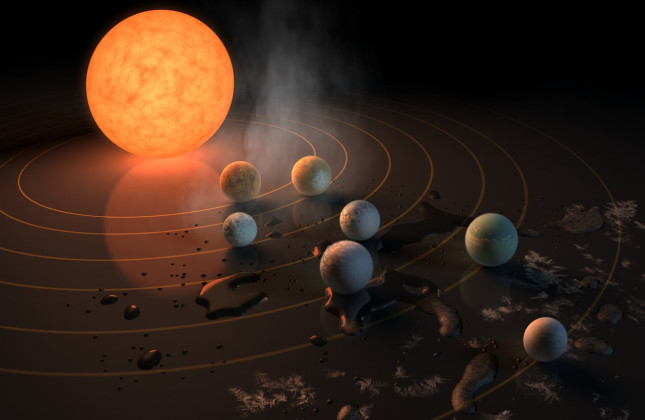Pint of Science: Black holes and exoplanet systems (Utrecht)

Op 20 mei gaat het bij Pint of Science Utrecht over zwarte gaten en exoplaneten. De avond is in het Engels.
Black Holes
Wendy Williams, Postdoctoral Research Associate at Leiden University talks about black holes. Almost all galaxies have at their centers black holes that are over a billion times more massive than our Sun. Though small in comparison to the galaxies themselves, when they accrete matter these black holes can influence the formation of stars in their host galaxies. The physical processes of black hole accretion and star formation both give rise to emission at radio frequencies. Thus, by surveying the sky with radio telescopes, including with the new Low Frequency Array, we can map out the intricate interplay between black holes and their host galaxies as they grow and evolve in the Universe.
Exoplanets
Matthew Kenworthy, Associate Professor at Leiden University will talk about the seven TRAPPIST extrasolar planets named after their host dwarf star TRAPPIST-1 .
Photo of a black hole
Ciriaco Goddi, Scientist at Radboud University Nijmegen and Leiden Observatory will take you behind the scenes of taking the first photograph of a black hole. The Event Horizon Telescope Consortium has recently published the first image of a black hole, lurking at the center of the galaxy M87. The image shows a bright ring formed as light bends in the intense gravity around a black hole that is 6.5 billion times more massive than the Sun. This long-sought image provides the strongest evidence to date for the existence of supermassive black holes and opens a new window onto the study of black holes, their event horizons, and gravity. In the talk, I will describe the context, the meaning and behind the scenes of the biggest discovery of the year.
More information and tickets